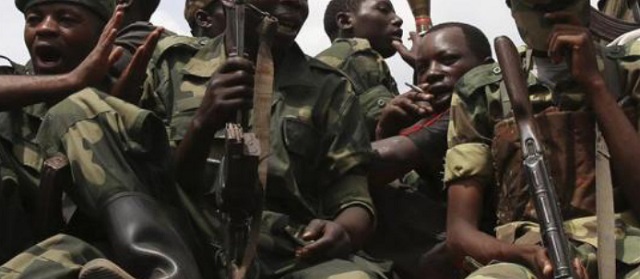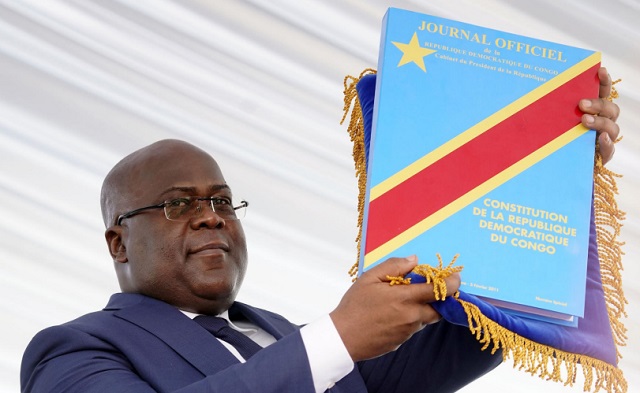
Set rules for foreign intervention in your country, DRC President Tshisekedi advised as tensions flare up once again
Kampala, Uganda | IAN KATUSIIME | The latest flare up in tensions between Rwanda and the Democratic Republic of Congo (DRC) has been quickly followed by attempts of mediation and diplomatic manoeuvres to stem an escalation of a recurring issue. At the heart of the flare up is a familiar group, the M23, which now hangs over the Great Lakes region like a curse.
Fighting has taken place between the M23 and Congolese government forces displacing thousands and creating instability in the delicate border area involving Burundi, Rwanda, DRC and Uganda.
DRC accuses Rwanda of backing the M23, a militia that has roamed the jungles of eastern DRC for years causing mayhem and destruction. DRC, a new entrant in the East African Community (EAC), has taken a series of actions against its neigbour; it has suspended RwandAir from its airspace and summoned the Rwandan envoy over the M23. Meanwhile protests have also taken place in DRC’s capital, Kinshasa, against Rwanda.
The accusations about Rwanda’s backing of the M23 have gone on for a decade and the country always finds itself in a difficult position when the accusations come up. After a few years of bromance since he got into office in 2019, DRC President Felix Tshisekedi has seen the relationship with his Rwandan counterpart Paul Kagame tested.
Analysts say Tshisekedi has been under pressure to act tough since M23 has been a problem for a while and the president’s actions of suspending RwandAir operations in the vast country has been hailed by his compatriots as bold.
Rwanda denies supporting M23 and is also making its demands amid the crisis- including asking DRC to release two Rwandan soldiers who were reportedly kidnapped by FDLR, a rebel group opposed to the government in Kigali.
Macky Sall, President of Senegal, has already taken up mediation efforts between Tshisekedi and Kagame and called for dialogue between the two neighbours. Sall is the chairman of the African Union.
Tshisekedi in the spotlight
As a new member of the EAC bloc, Tshisekedi is playing his cards carefully as he navigates a conflict that precedes his tenure in office. And optimism has been high since he showed diplomatic skills as mediator in the Rwanda-Uganda negotiations held in Angola in 2019.
A new report by the International Crisis Group (ICG), a think tank based in Brussels, has some advice for President Tshisekedi: set rules for foreign intervention. The report published on May 25 titled ‘Easing the Turmoil in the Eastern DR Congo and the Great Lakes’ says Kinshasa should step up diplomacy or else the country becomes a regional battleground once more. The report adds that Tshisekedi may have opened a “Pandora’s box” by inviting troops from neighbouring countries to fight rebels based in his country.
“The Congolese president could set rules for any foreign intervention, clarifying the objectives, duration and potentially the area of operation of those he has greenlighted, particularly that of Uganda,” it states.
“He could endeavour to persuade Kagame not to send troops into the DRC. Transparency about Uganda’s operation might help mollify Kagame, but to bolster his case, Tshisekedi can also lay out the reputational costs of a Rwandan intervention for Kigali,” the report stresses.
DRC invited Ugandan troops to pursue ADF militants on Congolese territory after the rebel group was blamed for a string of terrorist attacks in Uganda. On November 30, the Ugandan army launched attacks on ADF camps in the North Kivu territory of DRC. The operation by the Uganda Peoples Defence Forces (UPDF) named Shujaa, is now in its seventh month with no clear sign of ending.
In April, President Yoweri Museveni while hosting his Mozambican counterpart Filipe Nyusi on a state visit said 4,000 UPDF troops are in Operation Shujaa.
What has confounded observers is the absence of any reports of direct fighting between the UPDF and the ADF in what has increasingly looked like asymmetric warfare. This has raised further questions on the true nature of the Ugandan mission in its vast neigbour where it has a long and contested history. Ugandan troops were in DRC between 1996 and 2003 over a series of proxy wars.
“Drawing on Kenya for support, he should organise fresh talks with neighbouring countries to rethink further military action and develop a comprehensive plan for negotiations with armed groups,” the ICG advises.
Reports of the presence of Burundian troops in DRC have also caused concern in the region. “In late December, presumably with Tshisekedi’s blessing, Burundian troops crossed into the DRC to target the RED-Tabara insurgency, a Tutsi-led group opposing the Hutu-dominated government in Bujumbura.” The report added citing the potential escalation of fighting on DRC territory.
Meanwhile, Rwanda was said to be unhappy with the deployment of Ugandan troops in eastern Congo. The argument by Rwanda over the years has been that it is a small landlocked country wary of troop movements near its border. The addition of Burundian troops to the matrix is said to have got Rwanda on edge saying it could not sit comfortably with Burundian troops mushrooming in territory not far from its capital.
However Uganda argued that the deployment of the UPDF to pursue ADF could not wait any longer and according to people privy to the high level meetings preceding the deployment, Uganda had got the backing of the UN Security Council for the deployment after ADF were said to be responsible for the bombings in Kampala on November 16, 2021 near the Parliament building.
Rwanda has traditionally not had good relations with Burundi. Although tensions had been significantly reduced since Burundi elected a new President, Evariste Ndayishimiye, in 2020, the crossing of Burundian troops in December 2021 to pursue the Red-Tabara rebel group is said to be a new source of anxiety in Kigali.
Meanwhile the diplomats have been in overdrive. Adonia Ayebare, Uganda’s Permanent Representative the U.N., tweeted on May 31: “Speaking at the UN Security Council meeting “The situation concerning the DRC”. Condemned foreign armed groups ADF, FDRL and Red Tabara for killings and mass displacement of the population. I also condemned hate speech being promoted by some actors.”
Ayebare has been an interlocutor between Uganda and Rwanda and President Museveni’s emissary to Kigali for the past few years when relations started fraying. His omission of M23 from the list of dirty players was hard to miss.

M23 puzzle
The M23 has become a symbol of the behind the scenes movements in the Great Lakes region. It is difficult to tell the number of fighters in its ranks but how it keeps rising up to roil the region has been a matter of debate for years.
In numerous reports, the UN has previously implicated Rwanda and Uganda in the group’s activities. Sustained pressure from the U.S. and the UN is what led M23’s alleged backers to cut off their support for the militia leading to its defeat in 2013. However due to the weakness of the Congolese state in its eastern territory where an estimated 120 rebel groups operate with impunity, the M23 has been able to organise and mobilise fighters when called upon.
In a rare statement put out by the Rwanda Defence Forces last year in November, Rwanda said the M23 group was operating from Uganda after an M23 attack in Congo. Rwanda was reacting to reports after the M23 attacked military positions of Chanzu and Runyonyi, in North Kivu province in DRC.
The statement stopped short of saying Uganda backs the group in what was a change of tack from disavowing the militia to pointing out who is behind it.
This was at a time before Uganda and Rwanda had a rapprochement with Ugandan First Son Lt. Gen. Muhoozi Kainerugaba visiting President Kagame, a meeting that would culminate into the re-opening of the common border between the two countries.
The M23 is a group of former rebels of the National Congress for the Defense of the People (CNDP). The name came from the March 23, 2009, agreement between the CNDP and the Congolese government, which M23 leaders claimed the government reneged on.
In 2013, M23 was defeated by a UN intervention brigade comprising Tanzanian and South African troops. At the height of its powers, the M23 captured the strategic town of Goma, the largest town in eastern Congo before it was recaptured by government troops.
President Museveni has chosen to take a backseat in the latest M23 flare up perhaps out of a desire not to further alienate Rwanda. The last time though M23 became a headache for regional heads of state, Museveni convened a summit in Kampala between the M23 and the government of DRC to iron out an agreement. He was the chairman of the International Conference of the Great Lakes Region (ICGLR). He also convened a Heads of State meeting in Kampala that included Presidents; Joseph Kabila, Paul Kagame and Jakaya Kikwete.
Museven’s silence however is now being undercut by the tweets of his son Lt. Gen. Muhoozi Kainerugaba, Commander of Land Forces in the UPDF.
Museveni’s failure to rein-in Muhoozi ‘s commentary on sensitive topics, has left other actors in the DRC rebel arena in a bind. For most of them, the latest flare up in tensions between Rwanda and the DRC is testing enough without dragging in Uganda.
****
 The Independent Uganda: You get the Truth we Pay the Price
The Independent Uganda: You get the Truth we Pay the Price



